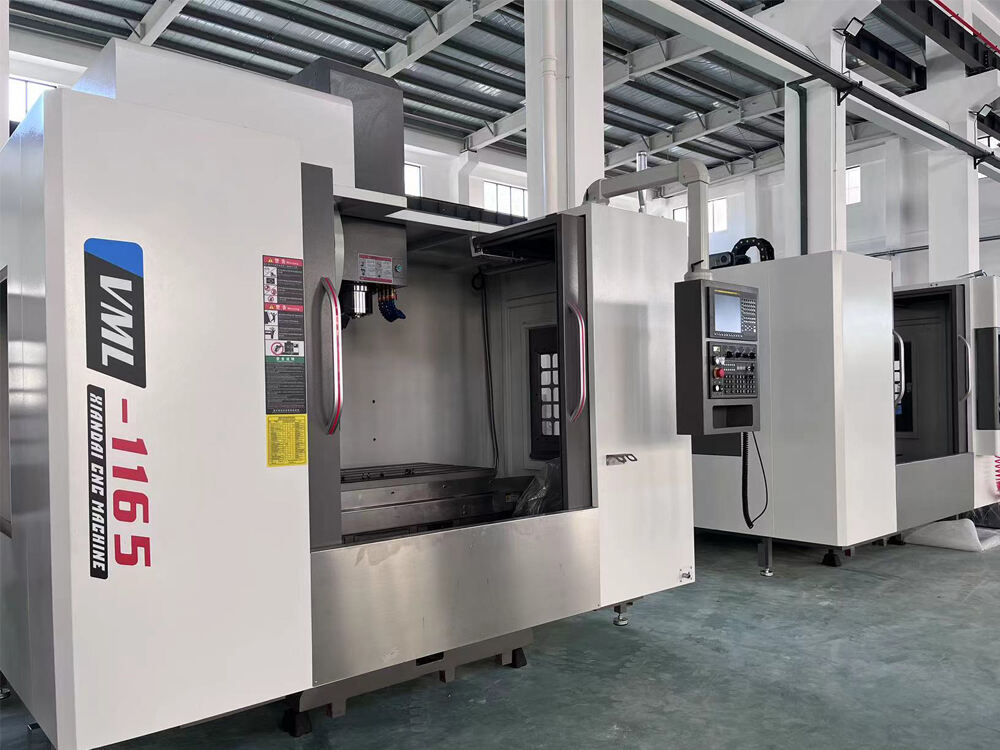Technological Advancements in Pipe Making Machinery
Automation and Robotics in Pipe Production
The introduction of automation and robotics into pipe manufacturing has completely changed how things work in this sector, making everything faster and more accurate. These automated systems basically take over many manufacturing steps using advanced machines that cut down on mistakes people might make and boost overall production rates. For instance, welding joints and putting together pipe sections are jobs that robots handle regularly now. They do these tasks with much greater accuracy than humans ever could. A report from last year showed that factories using these automated setups typically see their production times drop around 35-40%, and operational expenses go down somewhere between 18-22%. Beyond just saving money, this tech advancement means we get consistently good quality pipes every time they come off the line, something manufacturers really value when trying to stay competitive in today's market.
EDM and Laser Cutting Innovations
New developments in Electrical Discharge Machining (EDM) and laser cutting tech are changing how pipes get made across the industry. These cutting edge approaches let manufacturers create really detailed designs with tight tolerances needed in today's tough marketplace. What sets EDM and laser systems apart is their ability to handle complicated geometries that traditional methods just couldn't manage before. Industry reports indicate cutting times have dropped around 30% on average, plus there's about 15% less material waste compared to older techniques. For pipe makers dealing with strict quality specs, these improvements mean they can deliver superior products without breaking the bank on production costs. Many shops report being able to take on more specialized projects thanks to these technological advances.
IoT-Enabled Smart Manufacturing Systems
Bringing the Internet of Things into manufacturing is changing how pipes get made all across the board. Smart manufacturing setups with IoT tech rely on those little sensors and lots of data analysis to spot problems before they happen. This means factories spend less time stopped and make better quality products overall. Real time monitoring lets plant managers watch what's happening throughout the whole production line. They can jump in fast when something goes wrong or needs tweaking. Research indicates that companies adopting IoT solutions often see their operations run smoother by around half. The numbers speak for themselves really. And as this technology keeps getting better, we're probably going to see it play an even bigger part in making manufacturing smarter and more efficient down the road.
Global Energy Demands Driving Pipe Manufacturing
Oil & Gas Pipeline Expansion Projects
Expanding oil and gas pipeline networks matters a lot these days because energy needs worldwide just keep going up. Market analysts are talking about numbers around $47.1 billion for the global oil and gas line pipe market back in 2023, and they expect this figure to climb steadily at roughly 6.7 percent each year until 2032. What's driving all this? More drilling and extraction happening across the board, particularly out at sea, in deep waters, and far away places where pipes need to hold up against really tough environments. With how politics affects where resources end up, building new pipelines becomes almost necessary if countries want reliable access to fuel. That means companies have to invest in better materials and smarter tech so their pipelines last longer and work better under pressure.
Renewable Energy Infrastructure Requirements
Switching over to renewable energy has sparked a wave of new infrastructure work needed to back up things like wind turbines and solar panels. Cleaner power isn't just becoming popular it's actually growing fast, which means there's a bigger market for special kinds of pipes that can handle what these systems require. Wind farm operators need pipes that are strong but not too heavy while solar setups often call for materials that won't rust away when exposed to harsh weather conditions. Pipe manufacturers have stepped up their game to meet these demands. Looking at the numbers, the whole industry seems set to play a major part in reaching our green energy targets. Investors are pouring money into this space, and most forecasts point toward continued expansion in the renewable energy sector over the coming years.
Cross-Border Fuel Transportation Networks
Transporting fuel across borders plays a big role in making sure countries have reliable access to energy worldwide. These transportation systems help move fuels from one area to another efficiently, keeping our energy supplies steady even when things get shaky. Take a look at some major pipeline projects connecting Europe with places like Central Asia - they're clear signs of how nations are trying out different routes for their energy needs. What's pushing all this growth? Well, regions need more power locally while also dealing with complicated political situations around the world. Because of this trend, there's been an uptick in demand for stronger pipes that can handle these important infrastructure jobs. This increased need helps bring countries together on energy matters, creating partnerships that might not have happened otherwise.
Material Science Breakthroughs in Pipe Production
High-Strength Alloy Development
Material science has seen some pretty major developments lately, especially when it comes to creating strong alloys for making pipes. The new high strength alloys we're seeing today are designed to last longer and perform better even when faced with tough situations. Think about those really high pressure environments or places where corrosion is a constant problem, which happens all the time in energy plants and chemical processing facilities. Researchers have been tweaking the composition of these alloys, and according to what's coming out of labs around the world, they can now handle harsh operating conditions without losing their shape or strength. This kind of progress means pipes last much longer before needing replacement, saves money on repairs, and generally works better over time. What's happening with these advanced alloys matters right now for industry needs, but it also opens doors for completely new approaches to how we manufacture piping systems in the future.
Corrosion-Resistant Composite Materials
Materials that resist corrosion are essential for making sure pipes last longer, particularly when they're installed in places where they come into contact with aggressive chemicals or constant moisture. Recent advances in composite technology seem to be solving many of these problems through better protection against degradation and increased structural strength. Some new composite formulations actually fight off corrosion much better than standard materials do, which means less money spent on repairs and replacements over time. Industry reports indicate that businesses switching to these modern composites for their piping systems have seen maintenance expenses drop substantially, proving they work as real money savers. Beyond just cutting costs, this kind of innovation helps meet growing expectations around building infrastructure that stands the test of time while being kinder to the environment in the long run.
Sustainable and Recycled Material Integration
Sustainability trends are pushing manufacturers to incorporate recycled materials into their pipe production processes. As governments tighten regulations and consumers become more environmentally aware, companies are finding they must adapt or face penalties. Using these sustainable alternatives cuts down on carbon emissions and saves raw materials that would otherwise be extracted from the earth. From what we see in the field, businesses report not just environmental wins but actual cost reductions too. Tests show these recycled pipes perform just as well as conventional ones despite initial skepticism. The whole industry seems to be turning a corner here, balancing bottom line concerns with green initiatives required by modern manufacturing standards. Many plant managers tell us this shift makes business sense even beyond compliance requirements.
Regional Hotspots in Pipe Manufacturing Growth
Asia-Pacific's Infrastructure Boom
Infrastructure boom across the Asia-Pacific region has become a major factor behind the expanding pipe manufacturing sector. Places like China and India are transforming rapidly as cities grow bigger and economies expand faster than ever before. People need better piping systems everywhere from residential areas to commercial developments. We can see this happening all over with massive subway networks being built and entire industrial parks popping up out of nowhere. The numbers back it up too - somewhere around 6% year on year growth in the pipe market for Asia-Pacific makes sense when looking at all these construction projects. Infrastructure isn't just building roads anymore; it's fundamentally changing how economies function in this part of the world.
North American Shale Gas Developments
North America's shale gas revolution has really shaken up the pipe manufacturing business. As fracking operations spread across the continent, manufacturers are seeing rising orders for pipes built specifically for extracting and moving shale gas through pipelines. These aren't your regular pipes either they need to handle extreme pressures and resist corrosion from all sorts of chemicals used in the drilling process. The US remains at the forefront of this trend, with steel mills and fabrication plants ramping up their output to meet growing demand. Industry reports show pipe production volumes have jumped dramatically over recent years, making shale gas one of the main drivers behind the current surge in industrial pipe manufacturing across the country.
Middle Eastern Oil Export Infrastructure
Middle Eastern countries have been focusing heavily on building out their oil export systems lately, especially when it comes to pipeline networks that shape how energy moves through the region politically. Expanding these pipeline routes makes sense if we want to get crude oil out to global markets efficiently, something that has real implications for who controls what in the world's energy politics. Take a look at recent numbers and we see massive sums flowing into both upgrading old pipelines and building brand new ones across Saudi Arabia, Iran, and other key players. These projects aren't just about money either they help maintain中东's position as a major player in international energy trade while keeping oil flowing steadily from one continent to another without interruption.
Sustainability Trends Reshaping the Industry
Energy-Efficient Production Methods
The push for better energy efficiency is really taking hold in the pipe manufacturing sector thanks to all sorts of new production approaches hitting the market lately. Manufacturers are seeing real benefits from things like improved insulation materials and smarter control systems that automatically adjust operations based on demand. The numbers tell quite a story too. One industry analysis pointed out that factories switching to these greener practices often save around 30% on their energy bills. Companies that make this switch see their bottom lines improve while at the same time helping reduce environmental impact. Some businesses even find that customers appreciate knowing they're working with manufacturers who care about sustainability, which adds another layer of value beyond just cost savings.
Waste Reduction in Pipe Manufacturing
Cutting down on waste has become a major focus for pipe manufacturers trying to green their operations. Many plants now employ techniques like precise cutting methods, repurposing metal scraps, and streamlining how they make pipes to keep waste to a minimum. The financial benefits are clear too companies save money when they waste less material and get better value from what they do use. Plus, there's the environmental angle fewer discarded materials mean less pressure on landfills and preservation of raw materials we can't afford to lose. According to figures from the National Association of Manufacturers, some firms have actually managed to slash their manufacturing waste by half or more over just the last five years. These results point to real progress in making pipe manufacturing cleaner and more accountable, something that will only become more important as regulations tighten and customer expectations evolve.
Circular Economy Implementation Strategies
More and more pipe makers are getting serious about circular economy ideas as they try to build greener supply chains. Businesses across the sector are coming up with ways to give old materials second lives instead of just tossing them away, which means longer lifespans for raw materials and less trash ending up in landfills. Take some top companies for example who run programs where customers can return used pipes so the company can melt them down and make brand new ones from the same stuff. These kinds of efforts cut down on garbage while saving money on raw materials too. One big name in PVC piping stands out here since they manage to turn around almost 90 percent of their scrap material back into usable product. That kind of performance isn't just impressive it sets a real standard others should aim for. What we're seeing now is manufacturers taking real steps toward sustainability rather than just talking about it.




